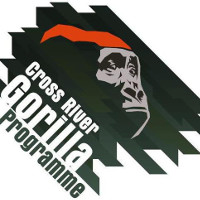Discovery
Discovery of the Cross River Gorilla
In 1904, eight gorilla skulls collected from the Cross River region—then part of German-controlled Kamerun—were sent to the Berlin taxonomist Paul Matschie. After examining them, Matschie concluded that these gorillas were distinct enough to be classified as a separate species, which he named Gorilla diehli after the collector, Diehl. He believed that one of the skulls belonged to the more widespread Western Lowland Gorilla and therefore assumed that two different gorilla species lived side-by-side but did not interbreed.
Shortly afterwards, other zoologists—including Walter Rothschild (1904, 1906) and Daniel Giraud Elliot (1912)—challenged Matschie’s interpretation. They argued that the Cross River population represented a subspecies of the western gorilla, and should be known as Gorilla gorilla diehli, as it is today.
In 1929, gorilla taxonomy was revised again when Harold Coolidge attempted to simplify the classification system. Assuming that the western gorillas formed a continuous population, he placed the Cross River Gorilla within the subspecies Gorilla gorilla gorilla (the Western Lowland Gorilla). His revision reduced what had previously been eleven proposed gorilla species into a single species with only two subspecies: G. g. gorilla in West Africa and G. g. beringei in the east. This classification remained widely accepted for decades.
Throughout the 1930s, only scattered and often anecdotal reports of gorillas emerged from the region. More formal surveys were documented in 1957 and 1966, but information remained sparse.
By the 1970s, the Cross River region had been recognised as an important centre of primate endemism, home to at least six unique Old World monkey species (including the Drill, Preuss’s Red Colobus, and the Red-eared Guenon). At that time, it was widely believed that gorillas had disappeared entirely from Nigeria, and possibly from neighbouring Cameroon as well. Ongoing political instability—including the 1966–70 conflict—prevented further surveys, leaving the true status of the population unknown.
Rediscovery and Recognition
In 1983, evidence of gorillas living in the Mbe Mountains was documented by Clement Ebin. This breakthrough prompted renewed searches across the region, leading to the gradual discovery of additional gorilla groups in the Cross River landscape.
As field surveys expanded, researchers Esteban Sarmiento and John Oates re-examined around 100 skulls from the region—many of which had originally been studied by Matschie and were held in museum collections. Their statistical analysis confirmed Matschie’s early hypothesis: the gorillas of the Cross River region were distinct. It also revealed that a skull previously assumed to belong to a Western Lowland Gorilla was, in fact, a Cross River Gorilla. Rather than two types living side-by-side, there were two different subspecies living 250 km apart. The Cross River Gorilla was formally reinstated as Gorilla gorilla diehli.
A Rare Subspecies Revealed
The subspecies had been unexpectedly rediscovered in the wild, reclassified, and—through continued survey efforts—found to survive in roughly eleven sites across the region. It was the rarest gorilla subspecies, and almost nothing was known about its ecology, behaviour, or population status. Long-term studies and monitoring began soon after and continue today.
From Isolation Fears to New Insights
Early assessments assumed that each group lived in complete isolation, raising major concerns about inbreeding and the vulnerability of small populations—where the loss of just a few individuals could lead to local extinction. However, once genetic analyses were completed, researchers were surprised to find evidence of recent migration between several sites, despite fragmented and degraded forest corridors.
This discovery offered a more hopeful outlook, showing that the remaining subpopulations are not entirely cut off and that natural gene flow is still possible.
The Work Ahead
Despite these encouraging findings, Cross River Gorillas remain critically endangered and extremely fragile. Their survival depends on continued research into their distribution and ecology, protection of remaining habitat, and long-term conservation efforts across the entire landscape. Much remains to be done to secure the future of the few remaining groups hidden within the forests of the Cross River region.
